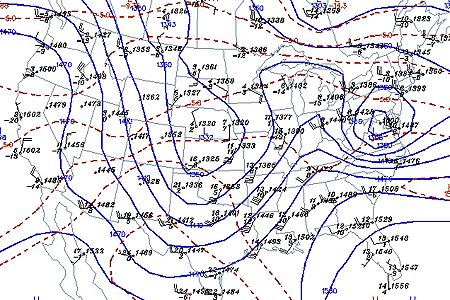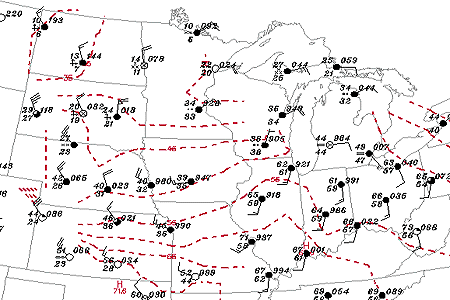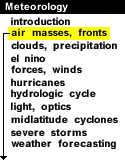
|
Warm advection at 850 mb is often indicative of rising temperatures at the surface, while cold advection at this level often precedes falling temperatures. Regions of strongest temperature advection are found where geopotential height contours (blue) and isotherms (red) are nearly perpendicular to each other. For example, on the following 850 mb surface, the strongest cold advection is occurring from Montana to New Mexico, while the strongest warm advection is occurring from eastern Texas into Illinois.

The influence of thermal advection at 850mb is typically felt at the surface about a day later (map below). In the area under cold advection, temperatures ranged from the 20's to 40's, with winds generally out of the northwest bringing colder air southward from Canada.

Regions in the area of warm advection, however, were experiencing temperatures in the 60's, providing these areas with a Spring day in early January.

warm advection |
|

moisture advection |




